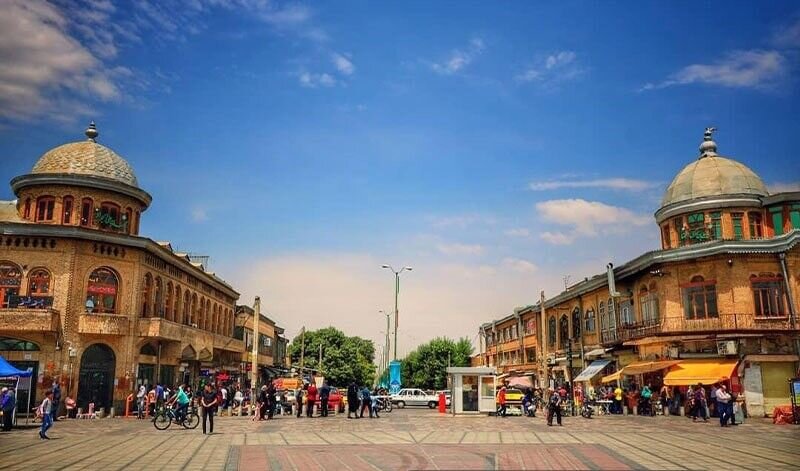Old wall unearthed during street renovation in Hamedan

TEHRAN – Remnants of a brick wall have recently been discovered some 1.5 meters beneath the surface when workers dug sidelines of a street in the ancient city of Hamedan, west-central Iran.
According to a local tourism official, the ruins were found in a pedestrianization project on Baba Taher Street, captivating the attention of cultural heritage enthusiasts and archaeologists alike.
Initial estimates suggest that the wall belongs to an ancient structure, buried approximately 1.5 meters beneath the street's surface, Hamidreza Heidari, the deputy tourism chief of Hamedan province, announced on Sunday.
“While excavating at a depth of 1.5 meters at the beginning of Baba Taher Street, a wall, which is apparently part of an ancient building, was unearthed. However, the exact antiquity of which is yet to be determined.”
Heidari emphasized the necessity of thorough examination by experts to ascertain whether the wall indeed bears historical importance. He added, "Our colleagues in archaeology are meticulously working on this artifact to precisely determine its historical relevance."

As the excavation continues and experts delve deeper into the mysteries of this newfound relic, anticipation builds regarding what other historical secrets may be concealed beneath the streets of Hamedan, offering a glimpse into the rich tapestry of Iran's ancient past.
Hamedan, historically known as Ecbatana, stood as a pivotal city in ancient times, boasting prominence as one of the ancient world's paramount centers. Though few relics from antiquity endure, extensive portions of the city center remain dedicated to archaeological excavations, offering glimpses into its storied past.
Notably, Hamedan is renowned as the resting place of the Tomb of Avicenna, honoring the legacy of the Islamic world's revered scientist. Additionally, visitors marvel at the Ali Sadr Cave and the ancient inscriptions of Ganjnameh, attributed to the rulers Darius and Xerxes of Persia.
Situated on a lofty plateau, Hamedan's origins trace back to the urbanization efforts of the Medes, Assyrians, Persians, and Parthians. While it may no longer rival its legendary status of yore, the city remains steeped in cultural richness, a testament to its enduring heritage.
One of the province's striking features is its seamless blend of cultural heritage and natural splendor. Visitors are treated to picturesque landscapes, traditional eateries, verdant public gardens, bustling outdoor markets, and above all, the warm hospitality of its inhabitants. Hamedan continues to captivate visitors with its timeless allure, offering a glimpse into the tapestry of Iran's ancient history.
AM
